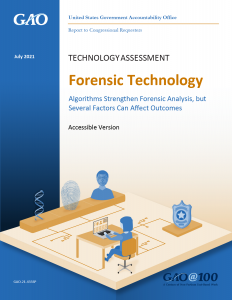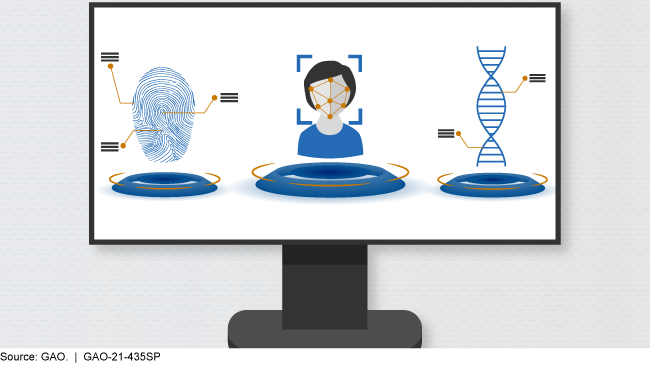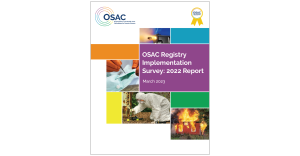
In July, the U.S. Government Accountability Office (GAO) released the report, Forensic Technology: Algorithms Strengthen Forensic Analysis, but Several Factors Can Affect Outcomes.
This is the second report in a two-part series of technology assessments responding to a request to examine the use of forensic algorithms in law enforcement. The first report, Forensic Technology: Algorithms Used in Federal Law Enforcement (GAO-20-479SP), described forensic algorithms used by federal law enforcement agencies and how they work.
In this report, GAO conducted an in-depth analysis of three types of algorithms used by federal law enforcement agencies and selected state and local law enforcement agencies: latent print, facial recognition and probabilistic genotyping. The report discusses
- the key performance metrics for assessing latent print, facial recognition and probabilistic genotyping algorithms;
- the strengths of these algorithms compared to related forensic methods;
- the key challenges affecting the use of these algorithms and the associated social and ethical implications; and
- options policymakers could consider to address these challenges.
GAO developed three policy options that could help address challenges related to law enforcement use of forensic algorithms. The policy options identify possible actions by policymakers, which may include Congress, other elected officials, federal agencies, state and local governments and industry.
In conducting this assessment, GAO interviewed federal officials, select non-federal law enforcement agencies and crime laboratories, algorithm vendors, academic researchers and nonprofit groups. It also convened an interdisciplinary meeting of 16 experts with assistance from the National Academies of Sciences, Engineering, and Medicine; and reviewed relevant literature. CSAFE co-director Karen Kafadar, professor and chair of statistics at the University of Virginia, participated in the meeting, as well as Will Guthrie, a CSAFE Research and Technology Transfer Advisory Board member. Guthrie is chief of the Statistical Engineering Division at the National Institute of Standards and Technology.
Read More:
- Report Overview: https://www.gao.gov/products/gao-21-435sp
- Highlights Page (2 pages): https://www.gao.gov/assets/gao-21-435sp-highlights.pdf
- Full Report (61 pages): https://www.gao.gov/assets/720/715463.pdf
Learn More:
CSAFE researchers are developing open-source software tools, allowing for peer-reviewed, transparent software for forensic scientists and researchers to apply to forensic evidence analysis. These automatic matching algorithms provide objective and reproducible scores as a foundation for a fair judicial process. Learn more about CSAFE’s open-source software tools.





